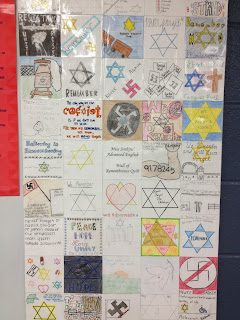Sometimes it is
difficult to find time in class to have students give presentations, but you
might still want to hear their thoughts and opinions about a topic such as the
Holocaust. I have used Voicethread as a
way to “hear” from the students without having to use class time. This is a website where students can create a
presentation and use a microphone to record their voice.
Here are some ideas
for your class:
- Have students create a timeline of important events from the Holocaust and have students describe the significance of each event.
- Have students analyze a piece of Holocaust poetry or art.
- Have students choose a topic on the Holocaust that they find interesting and share their research through Voicethread.
Here
are the directions for Voicethread.
- Go to the Voicethread website at http://voicethread.com.
- Go to Sign in or register at the top right hand of website. Create an account using your email address and create a username that is something other than your first and last name.
- Watch the “What is a Voice Thread” video for an explanation of how you will create the voice thread.
- Upload your images into Voicethread and add a label to each image.
- Explain each image with audio comments. There are several ways to record your voice for each image. If you have a microphone on your computer you may use that to record your voice. All Macs have built-in microphones. Voice Thread also gives you the option to put in your cell phone number and it will call your phone and you can record it that way. You can only do this for free 3 times total in your account. Whichever way you choose, you need to prepare in advance what you will say for each image. Create an outline for what you will say, but don’t read from a script.
- After completing the Voice Thread you should give it a title.
- Now go to ‘Publishing Option’ and select ‘Allow anyone to view’ – this will allow the teacher to view your Voicethread once you share it with them or email it to them.
- When you have completed the Voicethread, share it with your teacher by copying/pasting the URL into an email and send it to the teacher.




